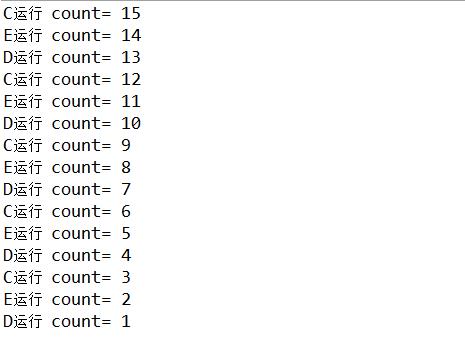多线程——继承Thread 类和实现Runnable 接口的区别
Posted 邵鸿鑫
tags:
篇首语:本文由小常识网(cha138.com)小编为大家整理,主要介绍了多线程——继承Thread 类和实现Runnable 接口的区别相关的知识,希望对你有一定的参考价值。
java中我们想要实现多线程常用的有两种方法,继承Thread 类和实现Runnable 接口,有经验的程序员都会选择实现Runnable接口 ,其主要原因有以下两点:
首先,java只能单继承,因此如果是采用继承Thread的方法,那么在以后进行代码重构的时候可能会遇到问题,因为你无法继承别的类了。
其次,如果一个类继承Thread,则不适合资源共享。但是如果实现了Runable接口的话,则很容易的实现资源共享。
通过下面的实例可以清晰的看出两种方式的区别所在。
1.继承Thread 类
package test;
/**
* 继承thread类
* @author hongxin
*
*/
public class testThread extends Thread
private int count=5;
private String name;
public testThread(String name)
this.name=name;
public void run()
for (int i = 0; i < 5; i++)
System.out.println(name + "运行 count= " + count--);
try
sleep((int) Math.random() * 10);
catch (InterruptedException e)
e.printStackTrace();
package test;
public class main1
public static void main(String[] args)
testThread mTh1=new testThread("A");
testThread mTh2=new testThread("B");
mTh1.start();
mTh2.start();
运行结果

代码分析
线程1和线程2之间的变量是不能共享的,每次count--都有各自的变量和结果。
2.Runnable 接口
package test;
/**
* 实现runnable接口
* @author hongxin
*
*/
public class testRunnable implements Runnable
private int count=15;
@Override
public void run()
for (int i = 0; i < 5; i++)
System.out.println(Thread.currentThread().getName() + "运行 count= " + count--);
try
Thread.sleep((int) Math.random() * 10);
catch (InterruptedException e)
e.printStackTrace();
package test;
public class main2
public static void main(String[] args)
testRunnable mTh = new testRunnable();
new Thread(mTh, "C").start();//同一个mTh,但是在Thread中就不可以,如果用同一个实例化对象mt,就会出现异常
new Thread(mTh, "D").start();
new Thread(mTh, "E").start();
运行结果

代码分析
三个不同的线程之间的变量是共享的,每次count--得到的记过都是再上一个线程运行结果之上得到的。
以上是关于多线程——继承Thread 类和实现Runnable 接口的区别的主要内容,如果未能解决你的问题,请参考以下文章